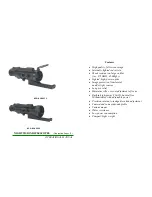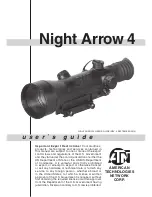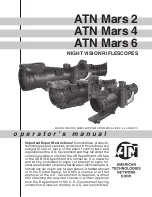
56
Latitude Scales
The easiest way to polar align a telescope is with a latitude scale, which should be located on the wedge. Unlike other
methods that require finding the celestial pole by identifying certain stars near it, this method works off of the fact that you
know the latitude of the site you are observing from and you know which direction is North.
If you know your latitude, then you know how high the pole is above the Northern Horizon. The angular distance from
the northern horizon to the north celestial pole is always equal to your latitude. To illustrate this, imagine that you are
standing on the north pole, la90°. The north celestial pole, which has a declination of +90°, would be directly
overhead (i.e., 90° above the horizon). Now, let's say that you move one degree south - your latitude is now +89° and the
celestial pole is no longer directly overhead. It has moved one degree closer toward the northern horizon. This means the
pole is now 89° above the northern horizon. If you move one degree further south, the same thing happens again. As you
can see from this example, the distance from the northern horizon to the celestial pole is always equal to your latitude.
This relationship between the celestial pole and the horizon also works for the southern hemisphere. However, the angle
is then measured from the southern horizon.
If you are observing from Los Angeles, which has a latitude of 34°, then the celestial pole is 34° above the northern
horizon. A latitude scale points the polar axis of the telescope at the right elevation above the northern (or southern)
horizon.
To align your telescope:
1.
Make sure the polar axis of the mount is pointing due north. Use a landmark that you know faces north. The Polar
axis on the Ultima 2000 starts at the base and points up through the forks. If you rotate the forks, they will circle the
polar axis of the telescope. So, point the forks due North.
2.
Level the tripod by adjusting the length of the tripod legs. There is a bubble level built into the wedge for this
purpose.
NOTE: Leveling the tripod is only necessary if using this method of polar alignment. Perfect polar alignment is
still possible using other methods described later in this manual without leveling the tripod.
3.
Adjust the wedge in altitude until the latitude indicator points to your latitude.
This method can be done in daylight, thus eliminating the need to fumble around in the dark. Although this method does
NOT put you directly on the pole, it will limit the number of corrections you will make when tracking an object. It is
accurate enough for short exposure prime focus planetary photography (a couple of seconds) and short exposure
piggyback astrophotography (a couple of minutes).








































